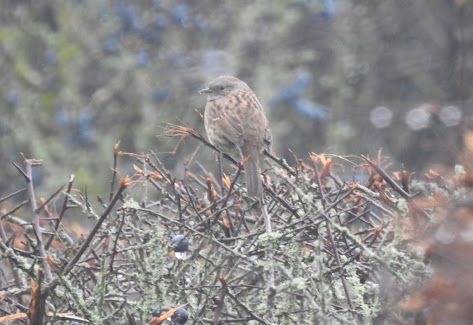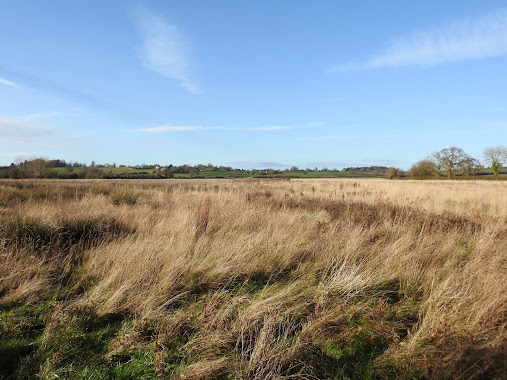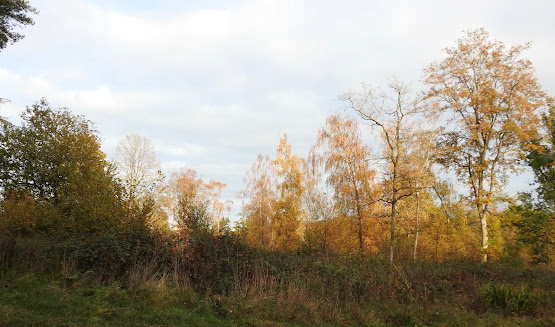The year ended, fittingly enough, with another damp squib.
Dull and gloomy weather with periods of drizzle and a bit of sleet for good measure promised little and delivered less. A light north-westerly breeze would later produce more wet snow.
The flash field contained three Shovelers, 47 Mallard, 14 Wigeon, 26 Teal, four Lapwings, and 25 Snipe. This was actually not bad; both Wigeon and Snipe having apparently gone up in numbers, and the Shovelers were new.
I had parked by the church, and so the return visit took me through the pool field, flushing 16 Meadow Pipits and noticing that the Coot and a Stonechat were still present.
 |
| The top pool |
I rarely visit the small top pool. It is deeper than the main pool, but is generally too small to encourage more than a cursory glance.
This route took me back along the line of the footpath and allowed me to locate a flock of 60 Linnets. They have probably been in the area all autumn, but I haven't often bumped into them.
So let's reflect on 2020. Not the best year I've experienced here. I missed April and the first part of May entirely due to following the government's stay at home guidelines to the letter. In spite of this I managed to see almost all of the regular species, and ended up with a patch year-list of 110. This equals my lowest ever figure, but given the circumstances I'll take it.
We even had some highlights. The one patch tick was a Pochard in late November, while the fly though Marsh Harrier in early August put in a strong bid for bird of the year. However, my personal highlight was flushing a Quail in late October, exceptional for the date and for the fact it was a visual record of a bird generally heard only (if it turns up at all). Redpoll numbers swelled in early October, but have since fallen back, and the ringers were able to catch a Mealy Redpoll among their number. Finally, a Crossbill flew south on a date in October and may have been one of those later found to be inhabiting nearby Morgrove Coppice.
I don't plan to get out again until January 1 2021, so I will wish a Happy (and healthy) New Year to everyone who reads this blog in the meantime.
















































